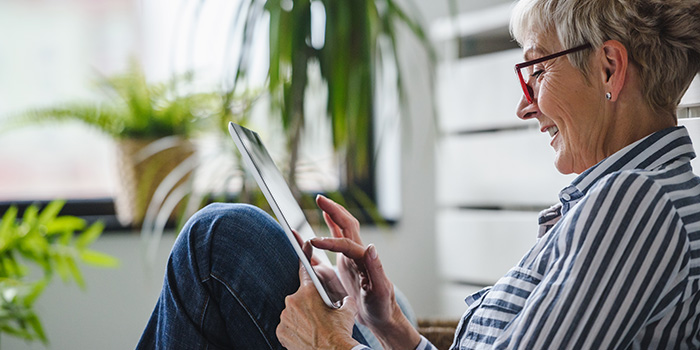Resources for Long-Distance Caregivers

Resources for Long-Distance Caregivers
There are so many resources out there for staying connected – but which platforms are the best for long-distance caregivers? Facebook, Facetime, and Zoom are fine, but they’ll never fully span the miles separating you from your loved ones — especially when they’re going through health challenges.
You see them. You hear them. But virtual care visits can’t get you close enough. You can’t touch them, look into their eyes, study their responses. You can’t always read if they’re living well — or not.
Such was the case of New Yorker, Elizabeth Yuko. In a recent New York Times article, Strategies for Long-Distance Caregiving, Elizabeth beautifully shares the anxiety she feels living hundreds of miles from her mom who is undergoing cancer treatment in Cleveland, Ohio.
As the story explains, Yuko is part of a study by Case Western Reserve University and funded by the National Institute of Nursing Research. The study, Closer: A Videoconference Intervention for Distance Caregivers, is expected to help identify how and which technologies can bridge that gap for the estimated five to seven million long distance caregivers in the US alone. (We’ll make sure to share their findings once published.)
If you’re part of that growing community of caregivers, you’ll find encouragement from Yuko’s story.
We also hope you find helpful, this post that includes our curated list with links to some of the most useful technologies and some tips we think will help you understand:
- Whether telecommunicating really makes a difference.
- Which technologies and services can help residents and patients know they’re a vital part of their families; and families feel more confident their loved ones are receiving the best care.
- Which technologies help caregivers nurture their own physical and mental health. Because as we’ve shared before in this blog, if you’re not tending to your own emotional and physical health, it’s harder to help others.
Resources for Long-Distance Caregivers
Let’s hear from Kim Lindauer, Administrator of AgeRight Care at Home. Kim has worked for the Mayo Medical Center and specializes in staffing healthcare, providing nursing resources and administering home healthcare.
Q: First, Kim in your practice, do you see how telecommunicating and other technologies are helping residents and patients feel connected?
A: Oh yes, the many ways we can all telecommute certainly helps our loved ones feel more connected and give them a better chance of staying mentally, emotionally and physically strong.
These technological advances also benefit home health and home care providers, as it gives us more frequent contacts with our patients. We can check in on them in between those critical face to face visits.
We also have coordinated virtual MD visits for our patients who are not tech savvy or don’t have the equipment necessary to do video conferences. They can even invite a friend or family member to join a medical appointment through one of the platforms clinical offices are using now, such as doxy.me or Teams.
Q: How can we go about building a broader virtual community of support around someone? Do you have specific recommendations?
A: There are so many fantastic virtual support groups for caregivers or patients dealing with specific issues. We’ve probably all used Caring Bridge at some point. There are also platforms like Lotsa Helping Hands, Caring Village, eCARE21 and others that can even keep track of meds, check off chores and handle emergencies.
Have you heard of Frameo? It looks like a picture frame, but it’s digital and synchs to your phone. When you take a photo, it’s posted to your loved ones’ digital frame.
Another way to encourage community assistance is setting up a grocery delivery system or actual meals through Meal Train. Friends can sign up for making and delivering a meal to help support individuals or families who need a little extra love during difficult seasons. Schedules are easy to set up and change.
Amazon Echo or Google Assistant devices are pretty inexpensive and easy to use. They’re like a personal assistant and speaker all in one. They’re fun to use and will give your loved one the assurance help and information is just steps away.
Then there’s the lost art of letter and card writing. There’s something exciting about opening an envelope with our names handwritten— not typed. Buy a stack of cards, address and stamp a batch of envelopes to have at-the-ready. Pop in a photo that can be carried around in a book or stuck to the fridge or wall. That extra effort says so much to our loved ones.
And finally, who doesn’t love receiving flowers or chocolates (if medical diet allows)? Some small acts of kindness just never get old.
Q: What specific ways can we can keep track of a family member’s medications and appointments?
A: It’s always smart to have a backup system, with all the important info in one place, even in an old-fashioned binder with tabs. Create files for power of attorney information, medical care, social services, contact numbers, insurance statements and other financial documents. Make copies and send to all onsite caregivers. It’s putting everyone on notice you’re involved, watching and you care.
You can also put a lot of that information and all updates on Google Documents, easily accessed by selected family members.
Other resources to check out include: Medisafe, MyMeds, AARP Caregiving, PainScale and again, eCARE21.
There are even apps like RXSafer that offer free coupons for prescriptions.
Q: At AgeRight Care at Home we talk a lot about the importance of caregivers taking care of themselves. Are there any technologies that support self-care?
A: I really like Headspace! There are also apps like Sanvello and Podcast Apps that offer wonderful tips and remind you that there are others on this journey. You’re not alone! Check out Caregiver/Storyteller, Caregiver SOS, Happy, Healthy Caregiver, and Eldercare Illuminated.
Of course, nothing replaces an in-person visit. Plan them with your loved one. Get them into your calendars so they happen. Plan what helpful errands you can run or items you can bring. Make room for plenty of talks, fun and laughter and before you leave, decide on a date for the next visit — virtual or in person. Anticipating that next visit shortens the time — and miles!
- Tags :
- Home Care
Recent Posts
Aging Well At Home — Even With COPD
24th Nov 2023Building Balance – Part Two
18th Oct 2023Building Balance – Part One
21th Sep 2023© 2026 AgeRight Care at Home | Privacy Policy


